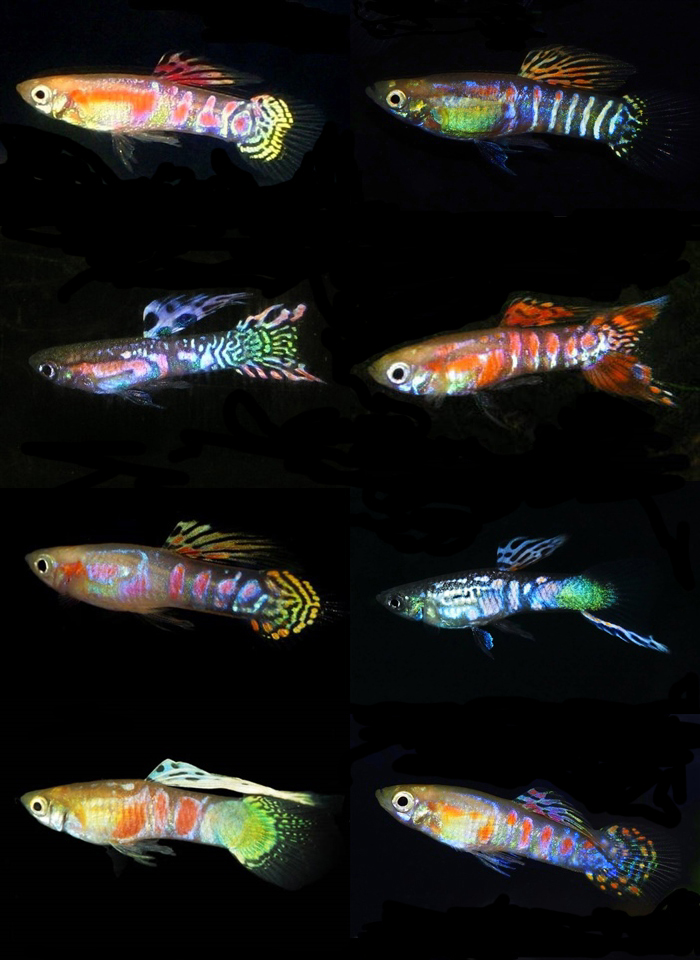Art XV
Breed guppies: according rigid strains or rich variations?
RUBRIEK: Guppy Kweek Posted on august 2020
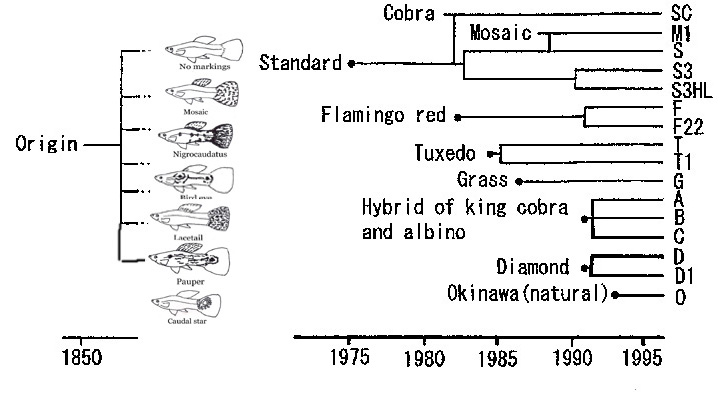
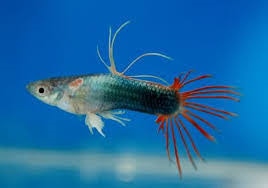
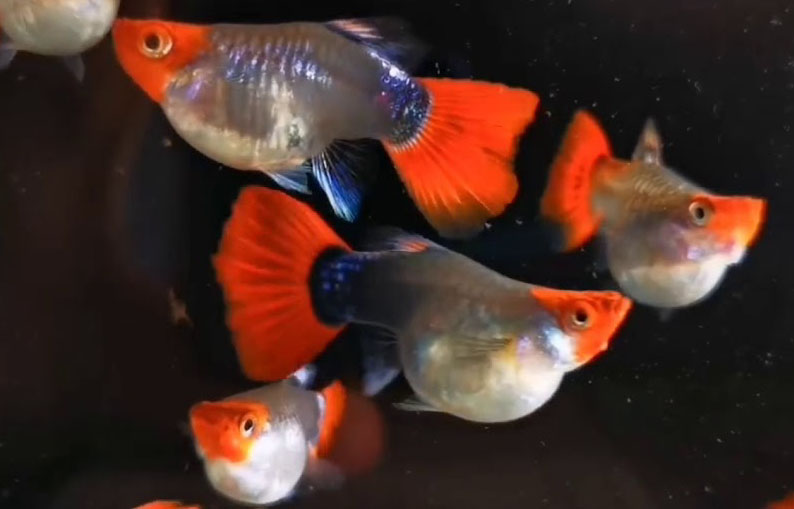
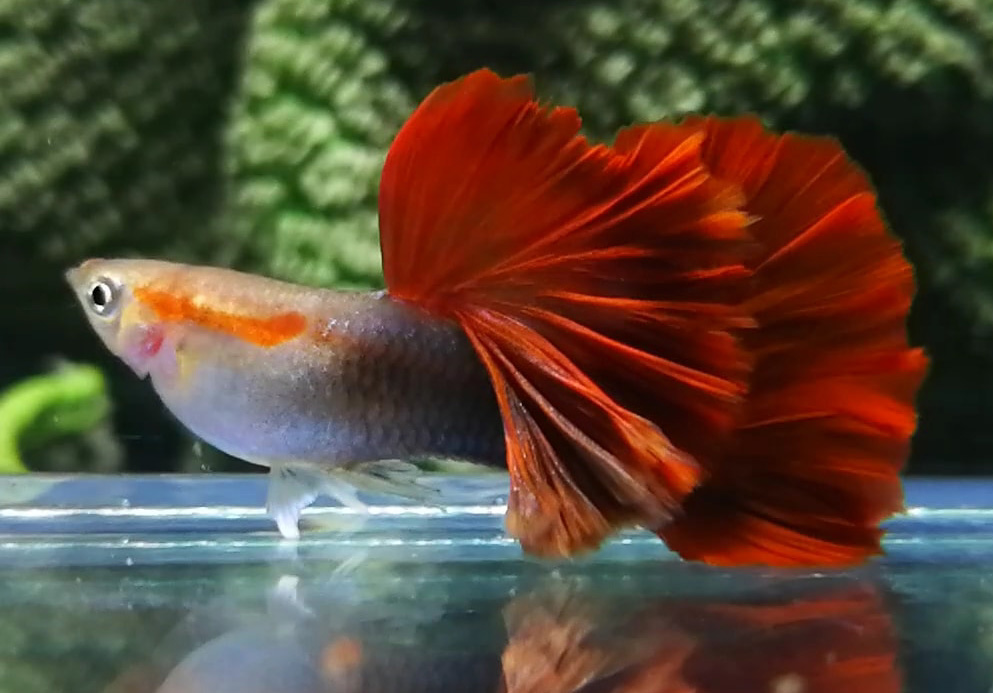
The guppy clubs keep the guppy breeding on the right track with their standards . Do they that? That is a representation suggested by themsel-ves , but in reality it is a double-edged sword. Because firstly: they are hungry themselves and thus indebted to novelties , if only to revive their activities and exhibitions, or to offer their members new objectives. Wild-caught guppies and endlers are also placed on the menu , but the first is optional - how do you weigh two different colors against each other? -; and the second have since the turn of the century rapidly evolved in the same direction as the guppies: the breeding of every possible and impossible combination. And secondly: in a sense there is also a conflict of interests when the chairmen are simultaneously jury members for competitions.
So I am still waiting for the moment when one unambiguously stops all those mutations that are actually deformations : fins frayed or torn apart at the crown-tails ; accretion on the face of the koi's ; squeezed, deformed bodies at the short bodies ; ...... Nowadays it is the fashion of fully grown fins. Is it a fish? Is it a flower? Is it a rose? No, it's a guppy. But can he still really swim or just splash around in the water like a drowning person? In the guppy clubs this trend is followed, because if you don't breed fish with big dorsals these days, you can no longer win "prizes".
That is all very arbitrary, because the only, real, original and natural gup strains , are those that can be observed in the wild-caught guppies, and which also formed the basis of the whole guppy- breeding since their introduction as aquarium fish in the 20th century. I have been privileged to get a glimpse of this in my youth, and one can now see these authentic basic strains reappearing from the regression in released guppy populations. See the figure above and also my article on that .
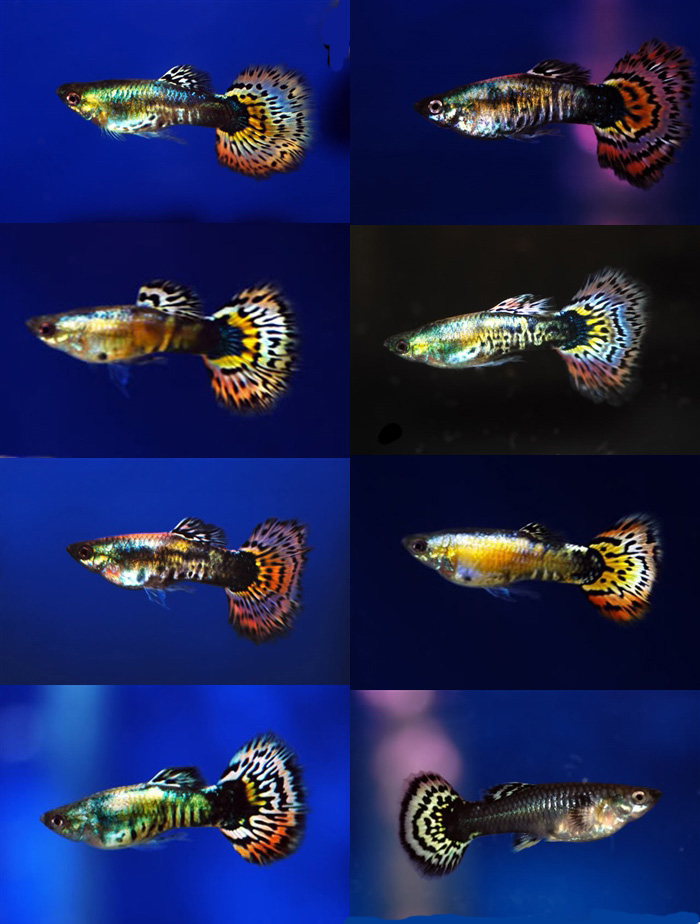
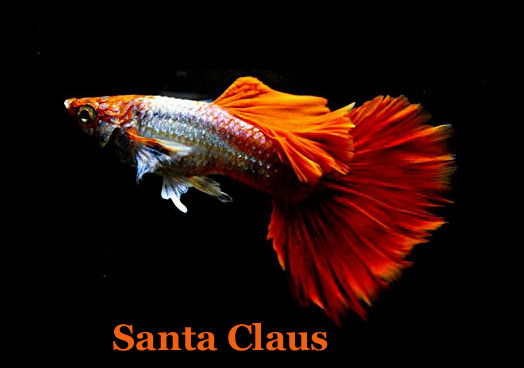

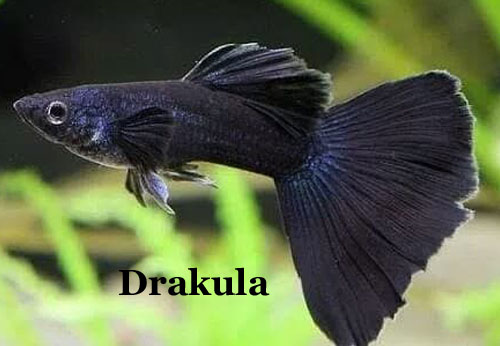

One can also notice that outright obsession for "the Strain" time and again in publications on the guppy clubs on Facebook and Co. The most frequent question with every new post is: "Which strain is this?" Like the owner of a street dog would send a letter to a dog club asking "What breed is this?" Please note, a certain snobbery is also not far away when one comes with a throbbing pedigree for a hideous animal. But I fear that the guppy clubs would start to collapse like a house of cards, if they officially proclaimed that they "have already seen everything" and therefore there are no more novelties to breed except freaks. I remember how I once got a hairless animal in a nest during my rabbit breeding: what an ugly bitch that was, it looked like a devil-rabbit from hell.
The attentive reader will long ago have noticed that I answered the ques-tion at the title of this article, already for myself a long time ago. If I have to choose between rigid patterns or a creative freedom, I will always choose the richness of color . The examples that you can find here in the central images are an ode to the richness of colors of the guppy. And in the left column you can find the charts of "mutts" which are the opposite of that.
Just a word about photography : taking pictures of guppies is easy, but taking GOOD pictures is extremely difficult. You may have already noticed that yourself. Here and there on the Net you can find really beautiful pictu-res of guppies. Some guppy breeders even owe their reputation in large part to the beautiful snapshots of their guppies. Because let's face it: even a gorgeous fancy guppy doesn't always look very photogenic. Much has to do with the incidence of light and the type of light. In an aquarium, one can observe the iridescent shades of one and the same fish one after the other, but a photo is a snapshot. Taking a picture of a guppy in a planted aqua-rium may look most natural, but the hues are best reflected in flash light and on a dark background color.
Above the variations in a cross between a Platinum Half Black Red Mosaic Tail with a Yellow-Green Snakeskin. Tuxedo and Snakeskin are next to each other in genealogy and can easily be crossed with each other. Witness the Nebula Steel, the Metalheads, the Leopards, the Galaxis and the Medu-sas, which are their hybrid products. I myself did this same cross in 2013, but since my HB was not Platinum, the hybrids weren't as nice as the ones I found recently by chance on a Indian weblog from 2011.
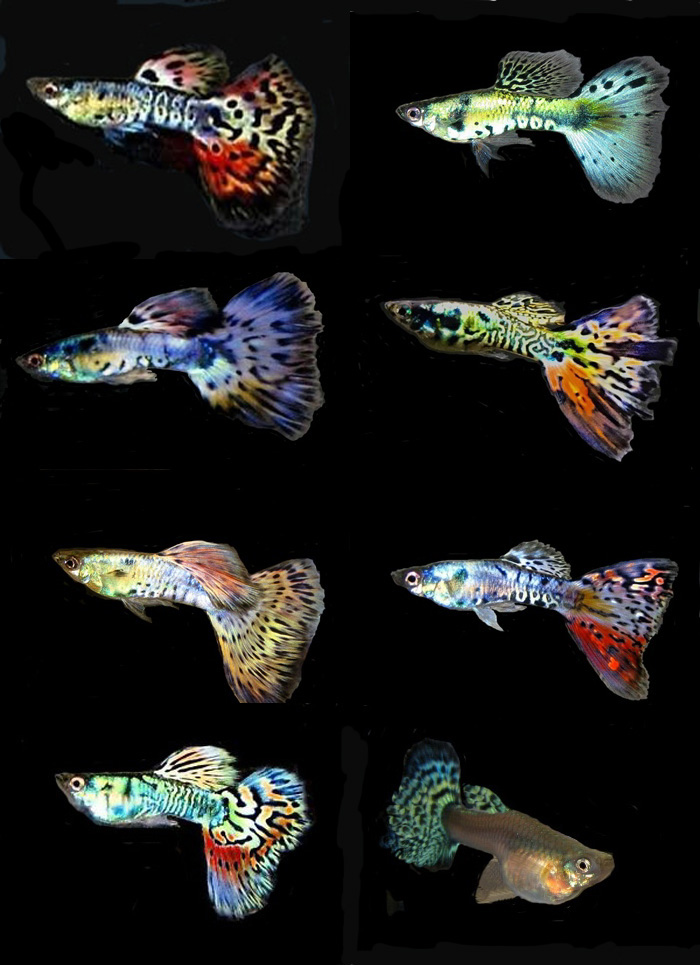
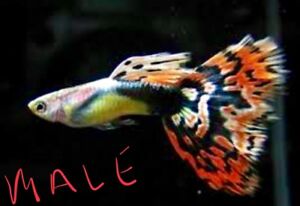
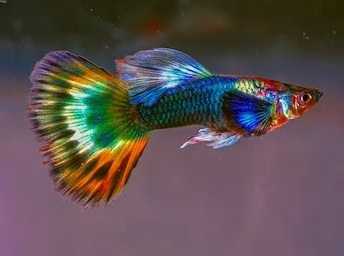
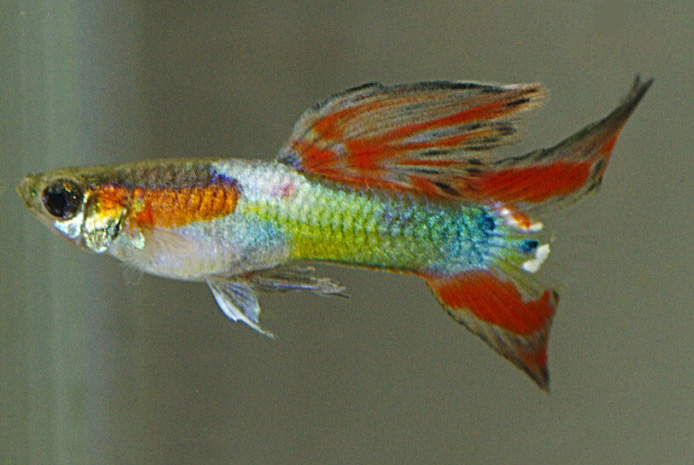
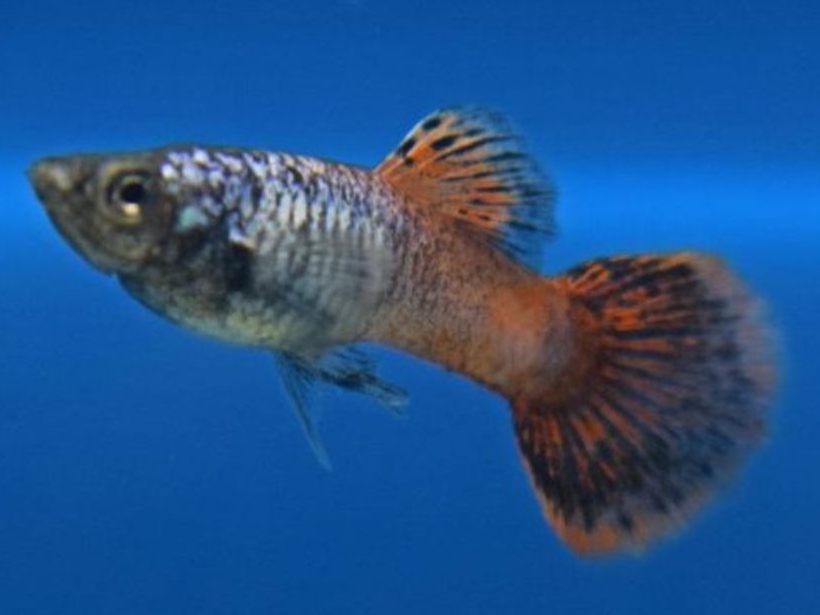
By the way, the pictures above here are from Nebula Steel . What is again striking here is how drawings or patterns provide depth : the depth in the color pattern of a gup is not only determined by those different layers above and below each other, but also through drawings that separate the colors from each other. A monochrome gup will never be able to show that game of colors and motifs. After all, that is also its natural and initial OBJECTIVE in the wild gup: to be able to parade and to impress the females with those changing combinations of glowing colors and figures.
The fact that both colors and figures differ from individual to individual, is not an objection here, but an advantage: it gives each gup its own individuality and "character". If you might be under the impression that a guppy would have no individuality, I challenge you to catch one particular fish in an aquarium. After all, he soon finds out that HE is "the target", while his brothers, who know that they are NOT targeted, keep swimming quietly in front of your net. So I actually feel sorry for all those beautiful guppies who are living as clones of each other in a sterile container without plants, and have to spend their lives as show animals for exhibitions and as baby producers.
Colors are therefore important for the guppy ITSELF; that cannot be em-phasized enough. Not only in place - the locations (see my previous articles) -, not only in dosage and distribution, but also in harmony . That perfectly shaped "fancy guppies" have not rarely a pale color, and mono-chrone guppies mostly a dull color, I have already talked enough about that. But there is also a third category: the guppies that show disharmo-nious color combinations. That is then the "work" of man (without taste). One may wonder WHY such combinations DO NOT appear in the natural populations, but you just have to look at the pictures on the left and you will get your answer. Technically such fish are "pasted" as a collage of different pieces of fixed genome . These arise from continued cultivation by man, because he follows a "breeding plan", and some patterns are then concentrated and riveted together (see my previous publications). He "forgets" that in this way he also takes whole bites of the genetics poten-tial of the species. Hence the need to cross-breed wild guppies or endlers BACK: the gup strains may be "perfect" from a human point of view, but from a natural point of view they are actually (substantive) poor mongers.
Here below pictures of a strain that does not have this problem: the Wiener Smaragd is an old strain that goes back to two primal strains in genealogy. One might forget that because he was subsequently "renamed" the Vienna Emerald a lot later. A commonly used strain for double swords, bottom swords and some rare top swords, which also convinces it because these are also one of the first and oldest caudal fin shapes.

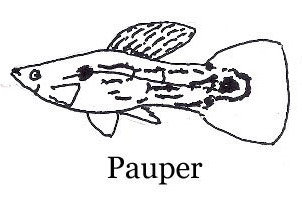
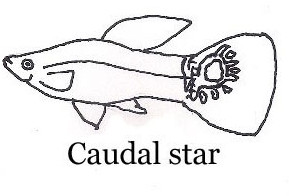
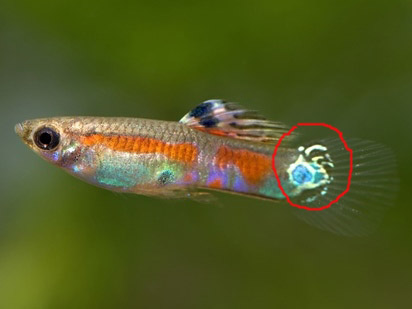
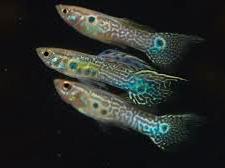
In connection with this Wiener Smaragd, a word of clarification in connec-tion with the "Emerald Green Iridescent" -EGI in short-: that is NOT the basis of his name, as emphasized in the publications in English . The ori-ginal German description primarily speaks of a meandering pattern on the body, such as a river meandering through the land or a ribbon swirling in the wind. According to my study, this indeed corresponds to one of the 8 original basic strains: the pauper (see drawing opposite) for whom that line game is a fundamental characteristic.
The fact that specimens appeared into the Wiener Smaragd that have, for example, a peacock's eye on the caudal end, was due to that other origi-nal strain, the caudal star (see drawing below). Such a spot was usually black, blue or green, with an iridescent metallic edge, but could also be white, yellow, red or pastel in color. As is the case with several other gene-tic features of the guppy, that star became over time more an interlocked pattern of a piece of fixed genome. But that the new name would have been named after that, are speculations a posteriori and largely inspired to place the center of gravity of gup breeding in the North American continent (again). By the way: that caudal star also appears in other strains, and is certainly not the exclusive right of the "Emerald Green" (see photo of Snakeskins).
But to the regret of those who envy it: the Wiener Smaragd is of German origin. Just like the (Schimmelphennig) Platinum , which, depending on the basic color of the guppy, can assume both a silver sheen and a gold sheen. As I have mentioned a few times already, some traits are inherited independently of each other (Mendel has made even a "law" of that). But WITHIN one and the same trait - like for example color - genes work together to give a kind of gestalt or composite as a result.
The last serie (see below) is that of the Ginga Kinubali . This name was given to them by their Japanese breeder Kenjiro Tanaka , who named them after steamed rice cakes (in their more modern version: cupcakes with colored decorations on them). Beautiful little gems that heralded a revival to brighter and more natural colors, through a hybridization with the Endlers . One of the few successful crossings if you ask me, because it would be better to leave the Endler intact in its specific colors and pat-terns. What nature has made, man can only destroy if he loses contact with nature and starts imposing his OWN "rules". Spread that message please!
